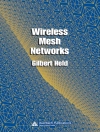Computer vision approaches to human motion analysis have received considerable attention from different research areas over the past couple of years. The strong interest is largely due to their various applications in surveillance, driver assistance systems, human-computer interfaces, marker-less motion capture, biomedical engineering and computer graphics. This thesis investigates the computational integration of different visual representations for the detection of human bodies and the analysis of their movements in both indoor and unconstrained outdoor envi-ronments. New image coding schemes are presented in combination with methods from machine learning and dynamic filtering to address issues of complexity, robustness and generalization.
Sobre o autor
Cristóbal Curio, Dipl.-Ing., studied Electrical Engineering and Computer Science at the Ruhr-University Bochum (Germany) and Purdue-University in West Lafayette (Indiana, USA). During his Ph D at the Institute for Neuroinformatics in Bochum he worked on computer vision systems for human body detection and tracking in driver assistance systems. Since 2004 he is a research scientist at the Max-Planck-Institute for Biological Cybernetics, Tübingen. His research interests include computer vision, computer graphics and machine learning for dynamic scene analysis.












